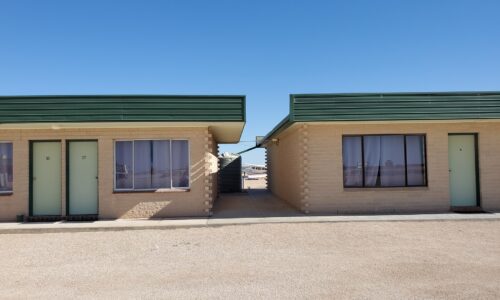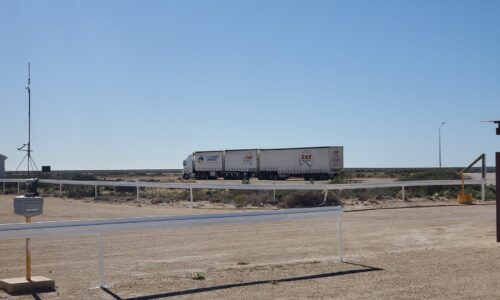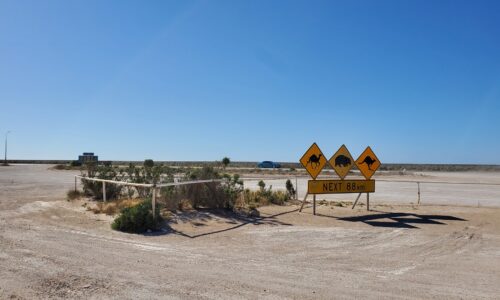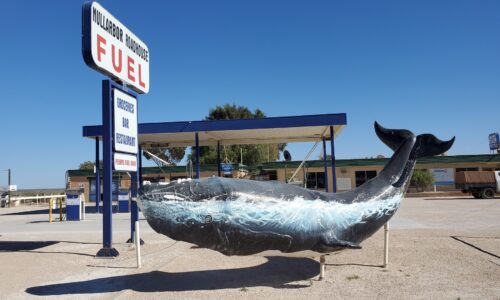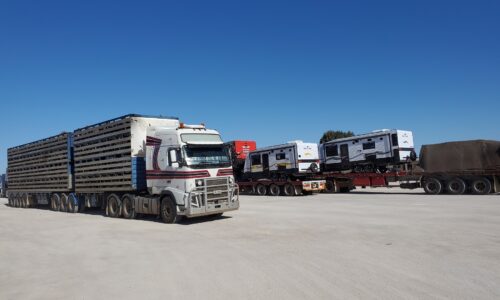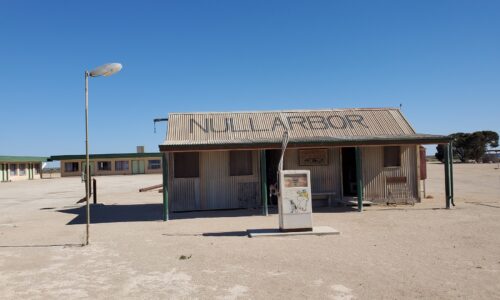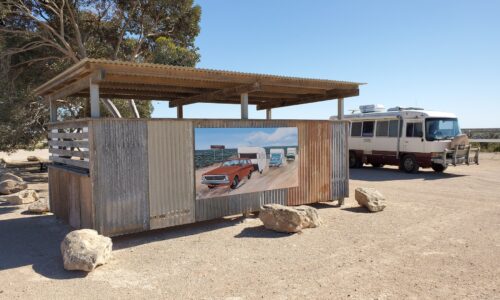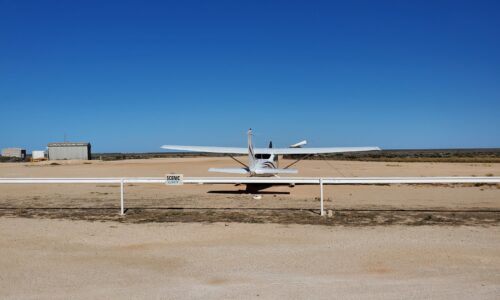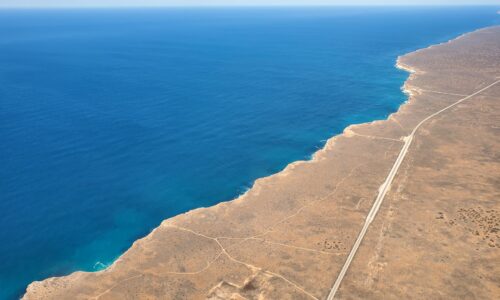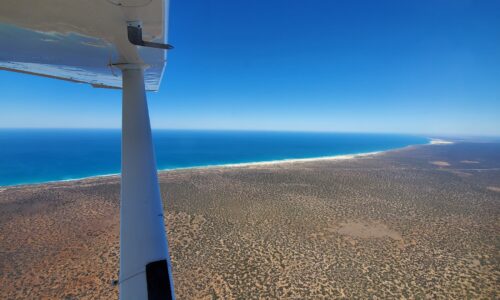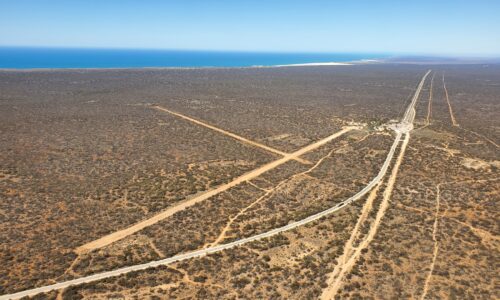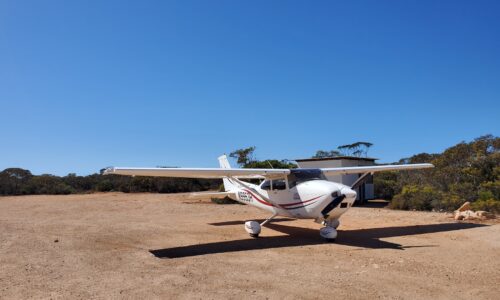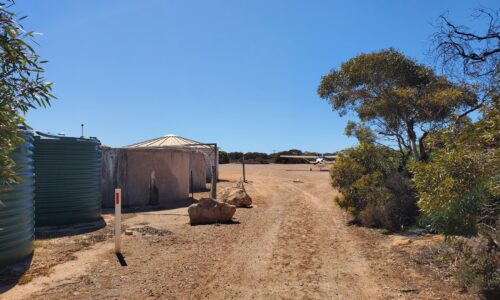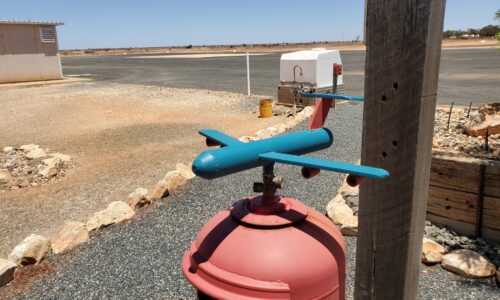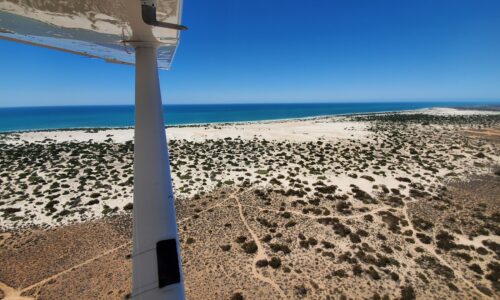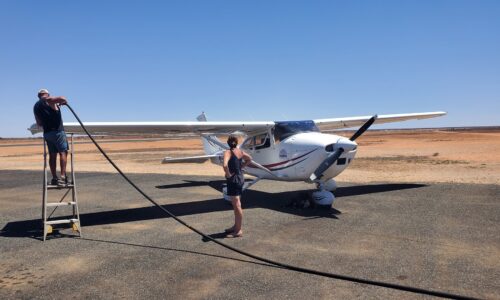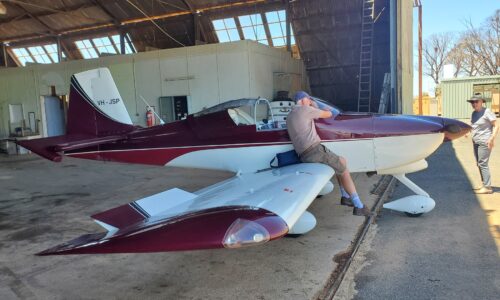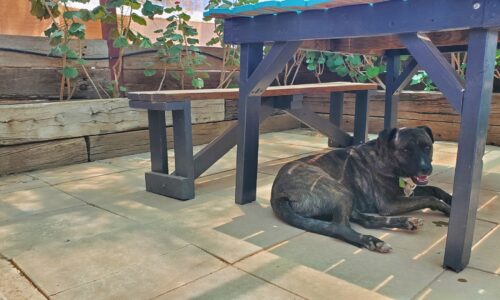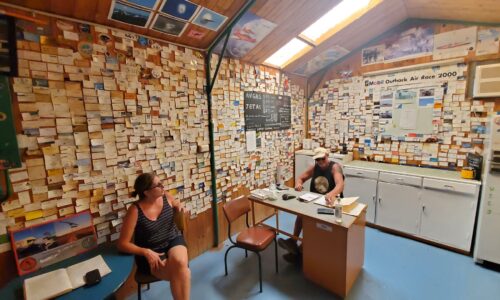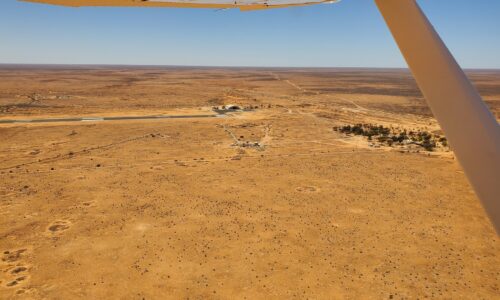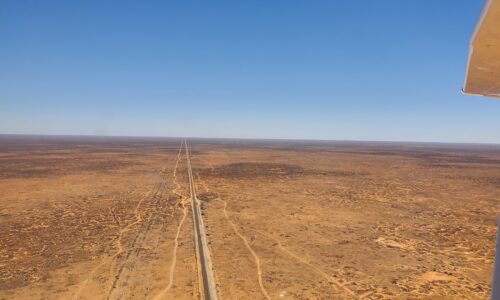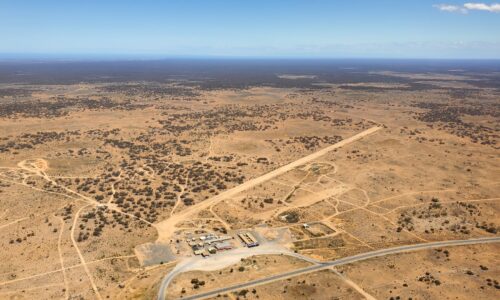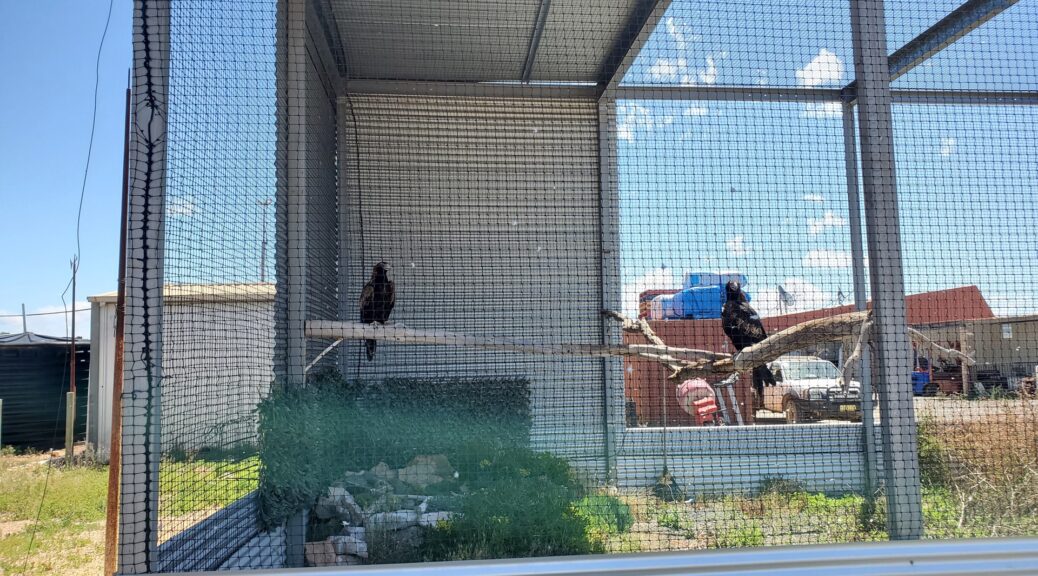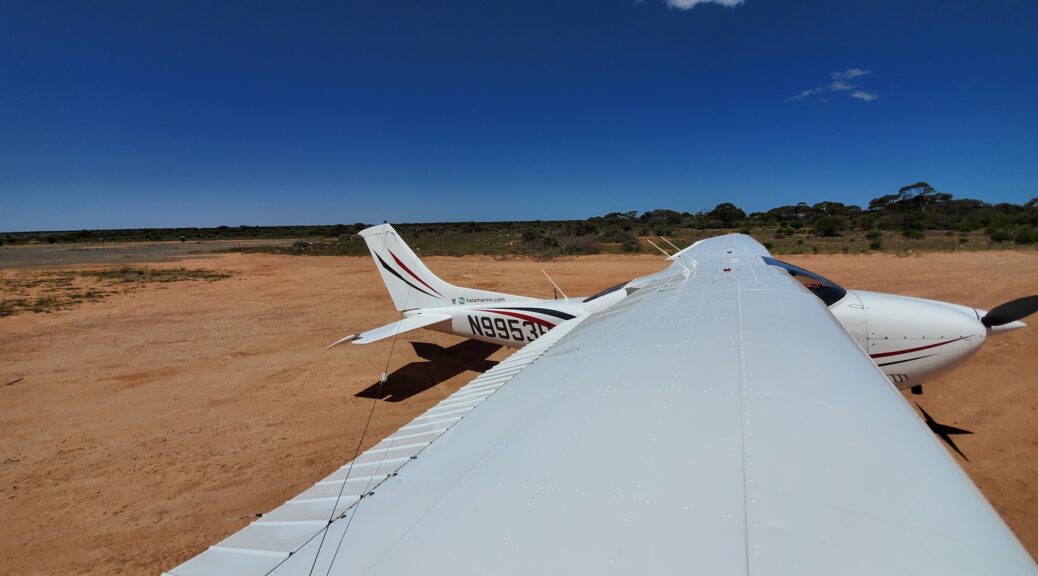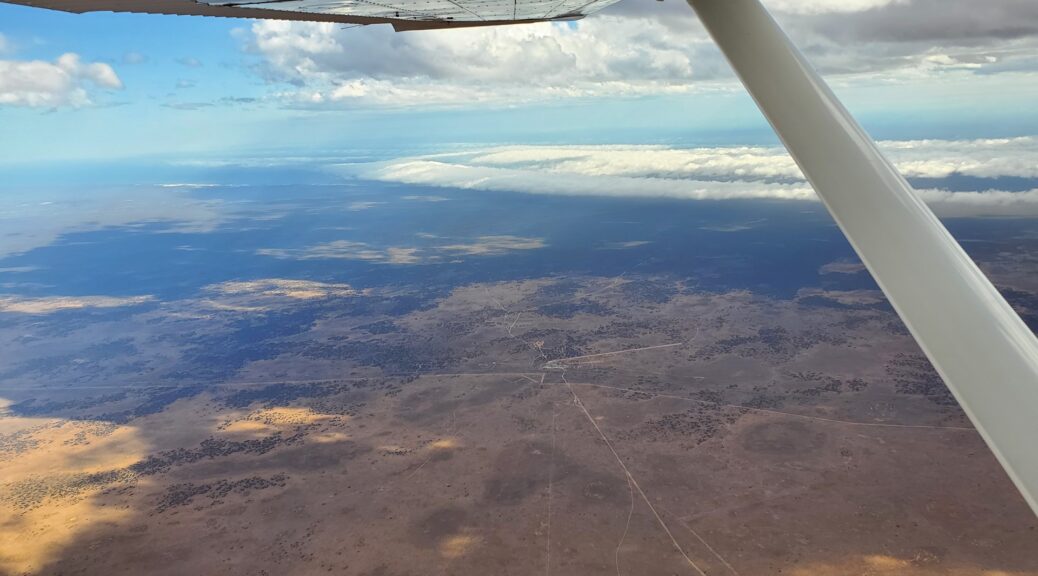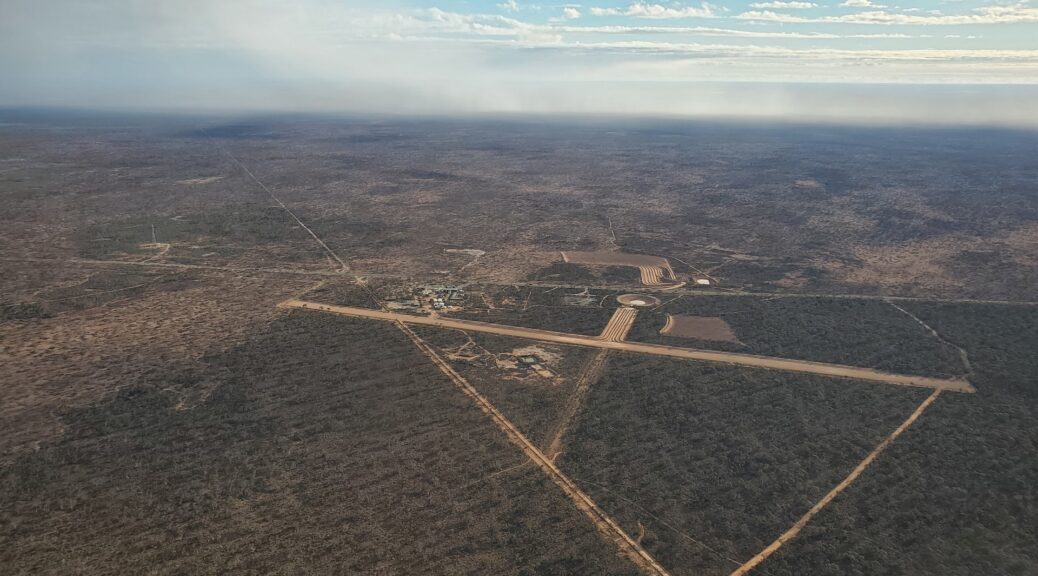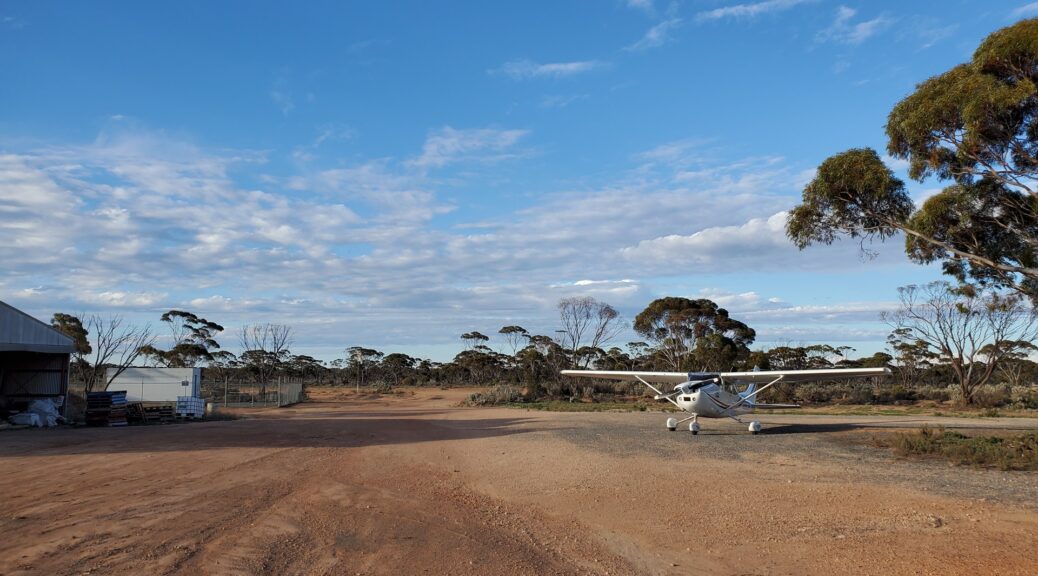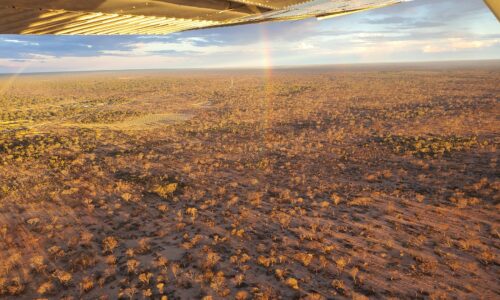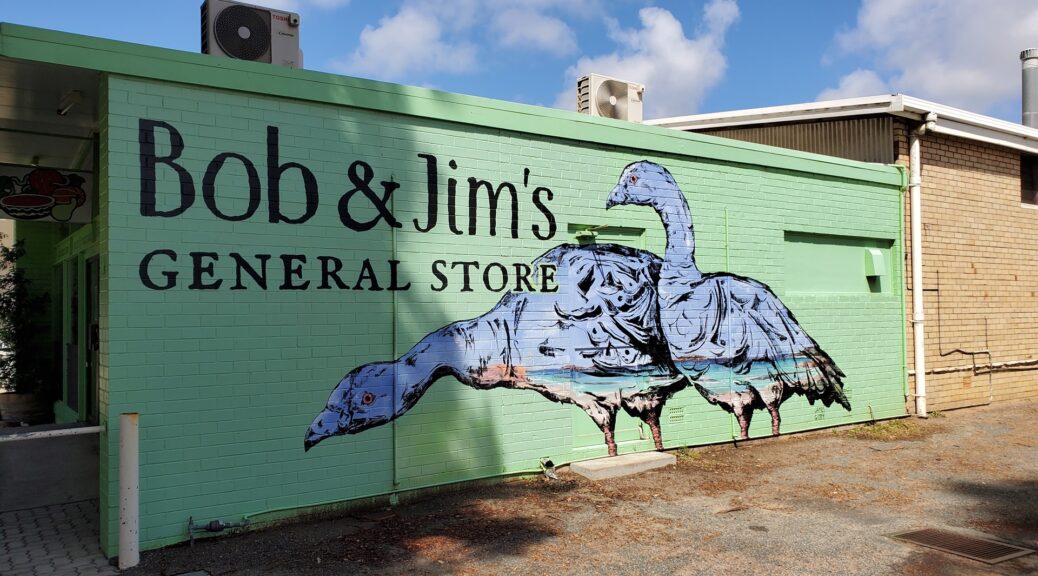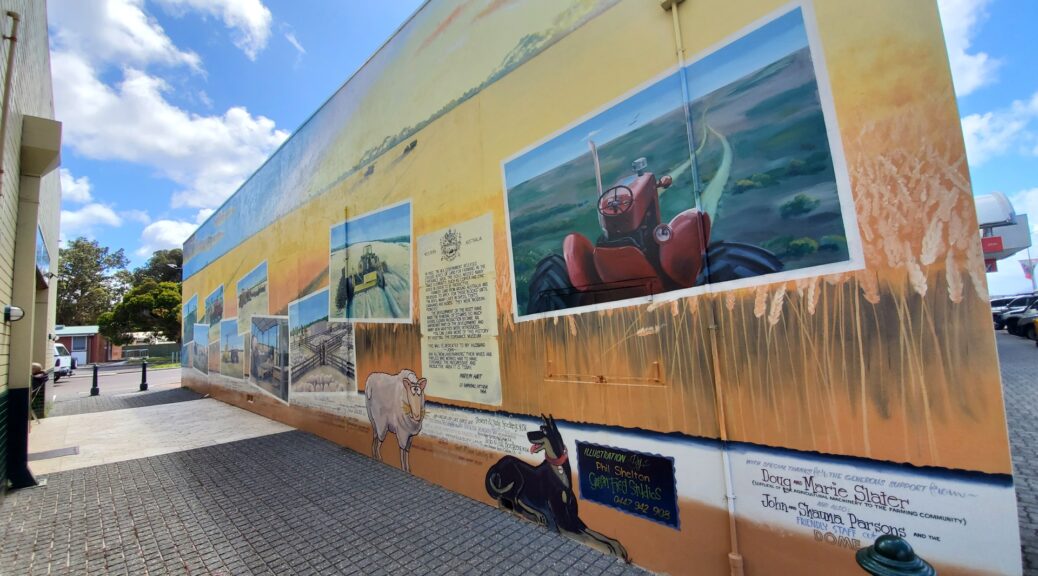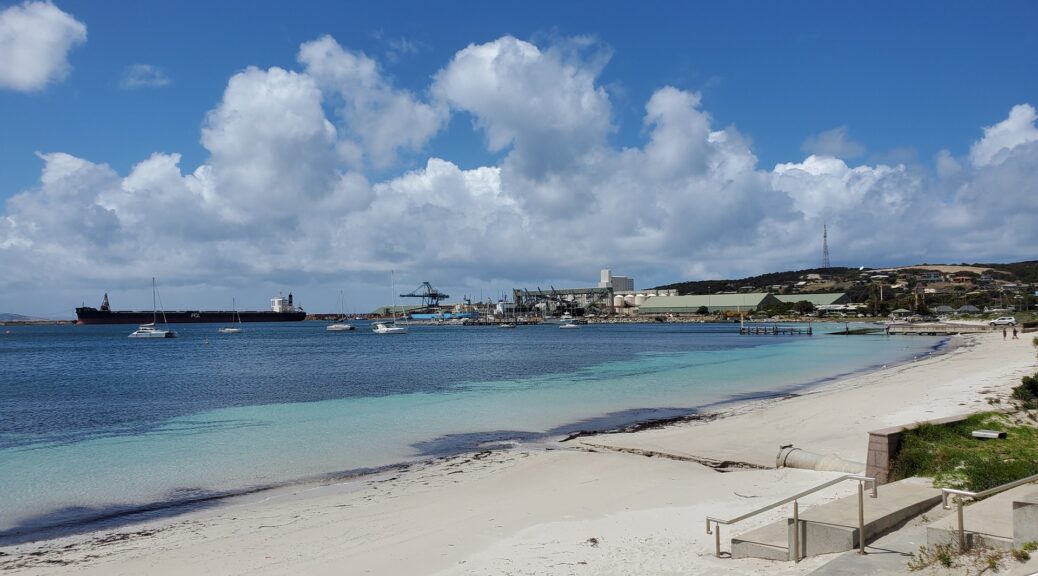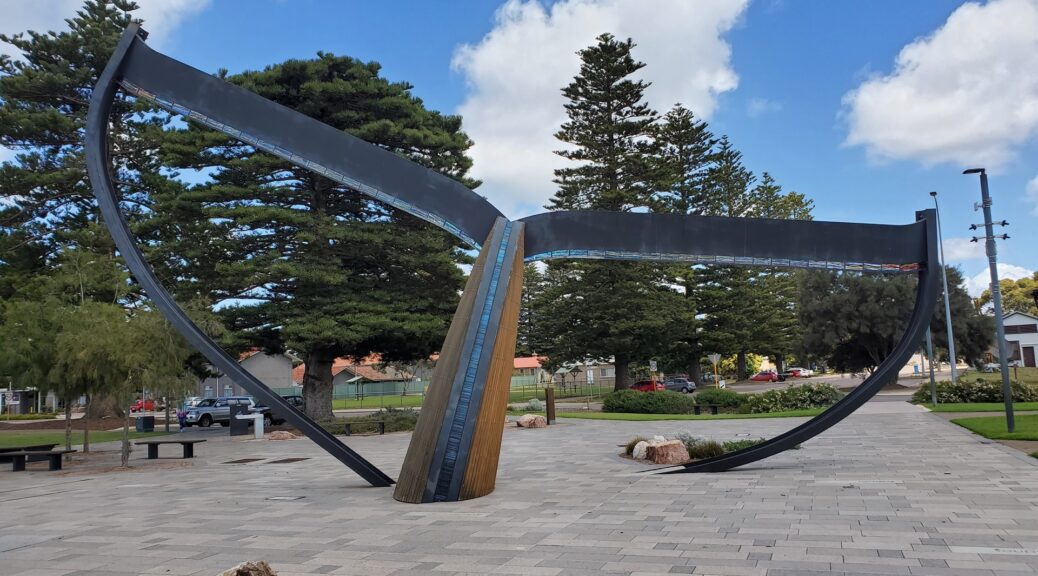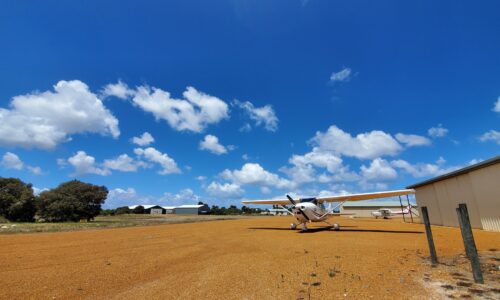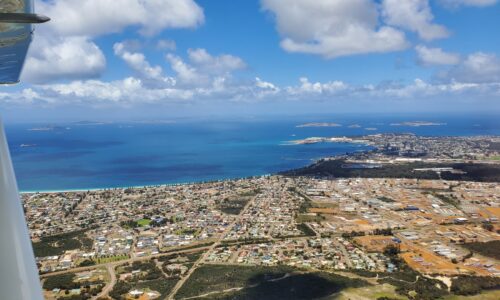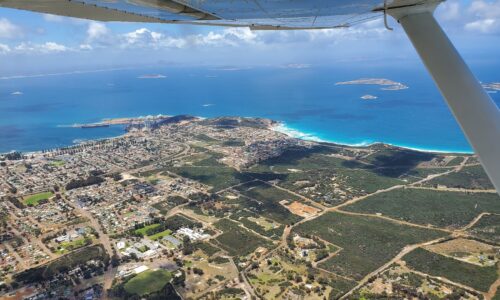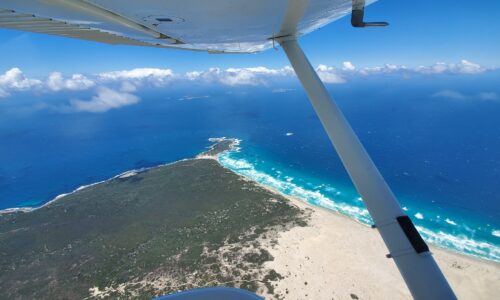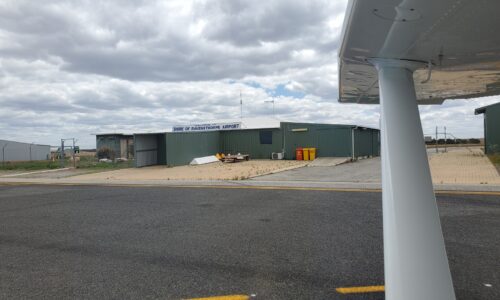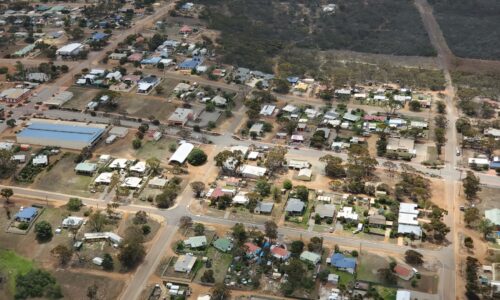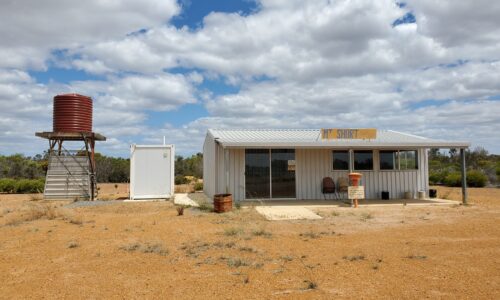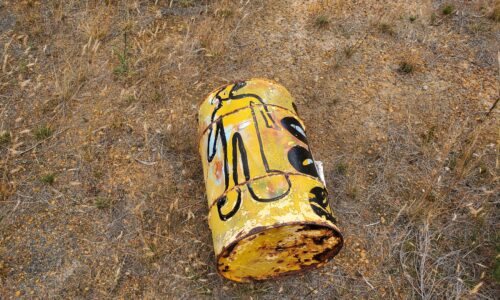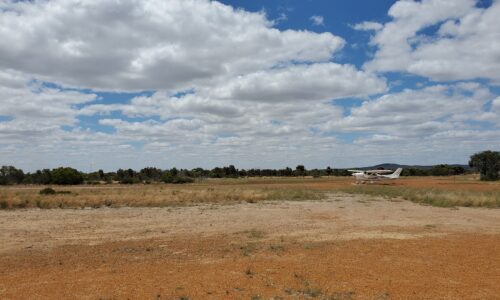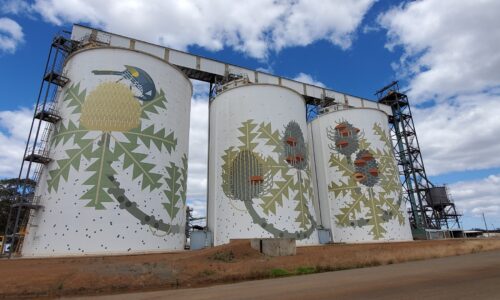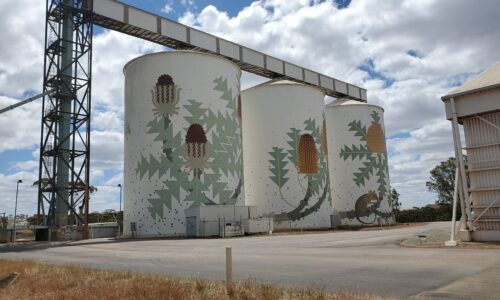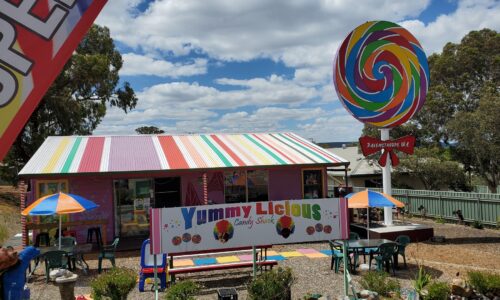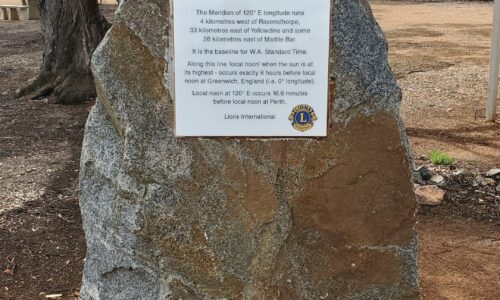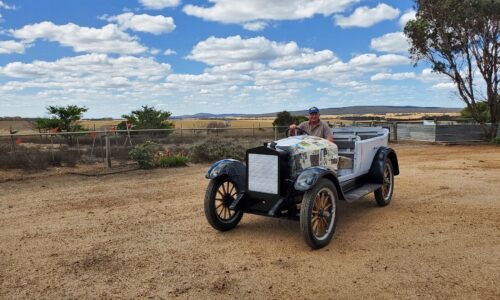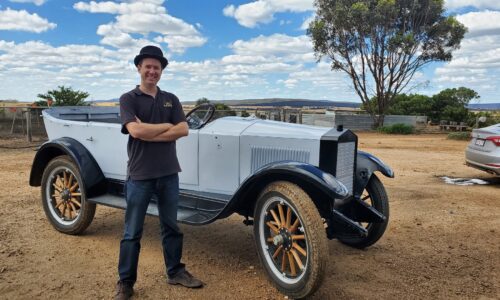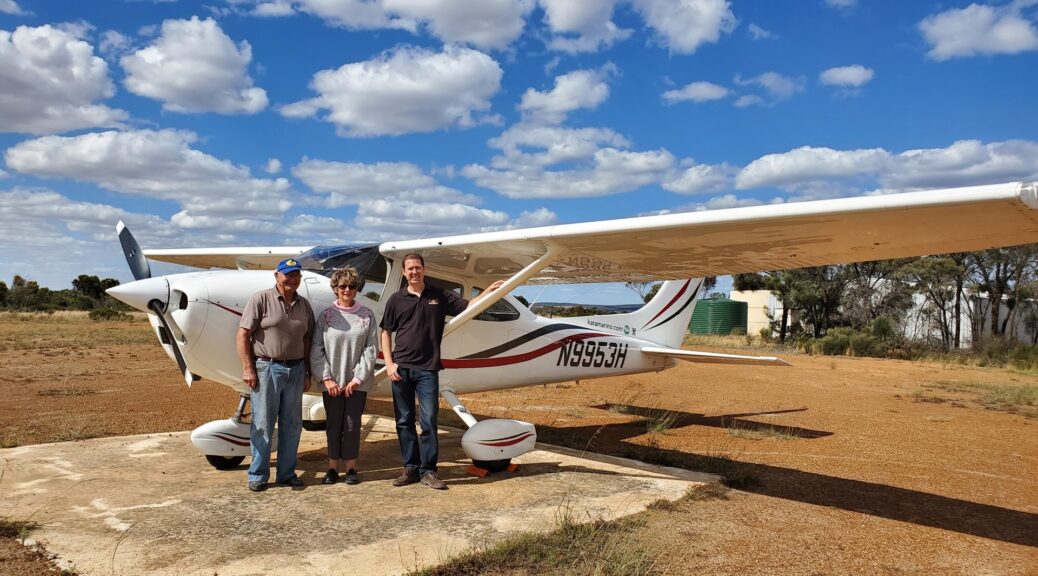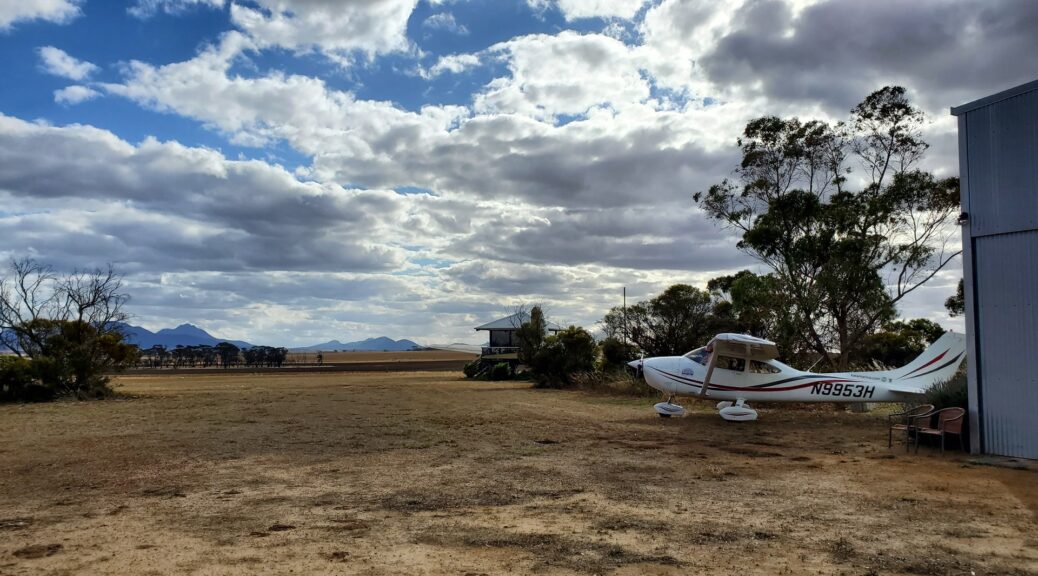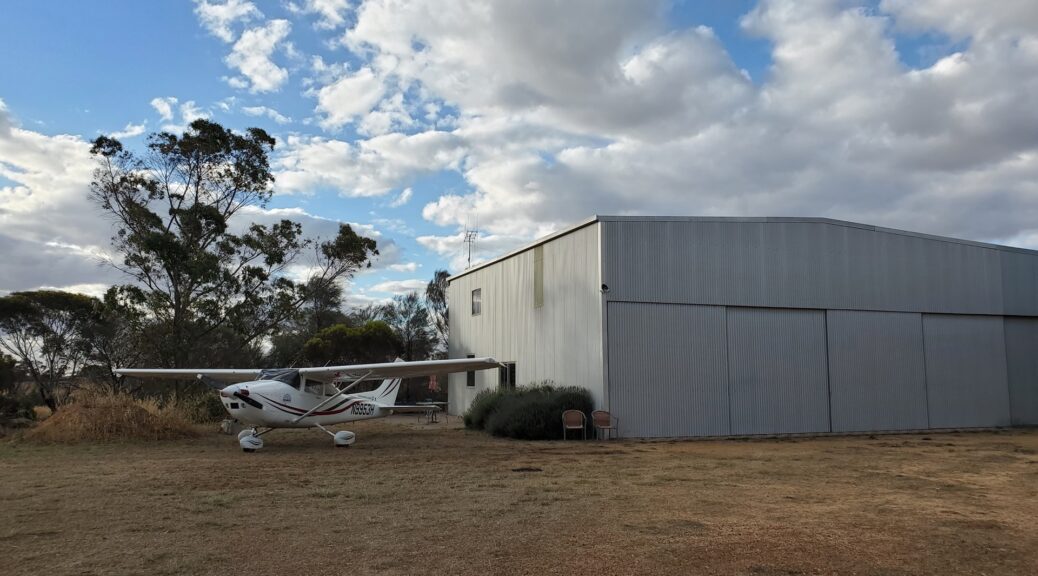Round the World – Australia 2, Part 5
Today would be the day I entered Western Australia. This state had had a particularly extreme reaction to COVID, closing down their borders to everyone at the slightest provocation; a real over-reaction. Finally they had deigned to open up the borders to most of the rest of Australia, with the exception of Victoria where the tail end of an outbreak was still being managed. Given their jumpiness, I was extra careful to properly fill in my travel authorisation request, and received the approval back by email. Good to go!
I grabbed a snack and drink from the Roadhouse to keep my energy up, and wandered around for a while taking photographs in the bright morning sun. There were plenty of old buildings and other curios from the earlier years of the Roadhouse’s operations, as well as more murals in addition to the one in the bar. Curiosity sated, I climbed into Planey and started up, being careful not to blow away the young couple’s tent with my propwash as I taxied out. I lifted off of the arid dirt runway and turned west into the wind, headed for Border Village.
I flew along the southern coast of South Australia, looking out my window at the Great Australian Bight. Historically this has been a winter hangout for Southern Right Whales, and the many 60+ meter cliff faces along the coast make it an excellent spot for whale watching. The population of whales was severely depleted by whaling during the 19th century, but has since started a recovery. The Australian sea lion, which is endemic to Australia and is currently listed as “near threatened”, breeds in small colonies along the cliffs of the Bight. The waters have been exploited through fishing for many years, and since the 1960s discussions have been ongoing about exploring the Bight for oil and gas; to date, though, this has not started.
Navigation was particularly simple; just follow both the coast and the A1 highway. Soon Border Village came into view. This settlement is really just another roadhouse, serving travelers along highway 1, and also hosts a Western Australia agricultural checkpoint; at this time, it was being used for COVID document checks. I landed on the dirt strip tucked in behind the settlement buildings and parked up, to have a look around.
Border Village hosts a couple of very Australian attractions. I was ecstatic to stumble across another “Big Thing”; this time it was Rooey II. I was particularly pleased to see that he was clutching a large jar of Vegemite, The story of how this kangaroo came to be is fascinating.
When Australia won the America’s Cup in 1983 there was much national celebration. It was then followed, in 1987, by the defence of the cup which was held in the waters off Fremantle. It was believed that the defence of the cup would attract such interest that the journey across the Nullarbor from the eastern states would see a dramatic increase in traffic.
At the time two men, Allan Schwarz and Brian Rucioch, owned and managed the truck stop at Border Village. One day when they were driving to Ceduna to get supplies they came up with the idea of a Big Kangaroo to entice travellers to stop. In David Clark’s excellent book Big Things Brian takes up the story: “We tried to acquire Matilda, the giant kangaroo mascot of the 1982 Brisbane Commonwealth Games, but it was overseas. So we got local signwriter and artist Bill Metheral (known locally as ‘Saltbrush Bill’) to produce drawings of a new big kangaroo and a scale model in polystyrene. Allan and I built the main body in Ceduna, and Val Samsonenko, the art teacher at a local school, made the head out of papier-mache. The whole thing was then fibreglassed by local fisherman Horrie Jolly and ‘Saltbrush Bill’ completed the job with several coats of paint.
In order to generate some publicity, we ran a ‘Name the Kangaroo’ competition in the local paper and entries were received from all over the Eyre Peninsula. Ruey was the winning entry, but because my nickname was Ruey, we ended up calling it Ruey II. However, Saltbrush Bill spelt it wrong, so he became Rooey II.”
https://www.aussietowns.com.au/town/border-village-sa
Border Village also hosts Hole 6 of the “Nullarbor Links”, which is billed as the world’s longest golf course. The website describes it thus: “The 18-hole par 72 golf course spans 1,365 kilometres with one hole in each participating town or roadhouse along the Eyre Highway, from Kalgoorlie in Western Australia to Ceduna in South Australia. Each hole includes a green and tee and somewhat rugged outback-style natural terrain fairway.” It turned out that there had also been a hole at the Nullarbor Roadhouse, and were holes at three more of the roadhouses which I was planning to visit. Too bad I hadn’t picked up a scorecard.
After an ice cream, I hopped over the border to the dirt strip at Eucla; this was the airport of entry which I had noted on my entry application. The place was deserted. I sat on the ground for 30 minutes to see if anybody showed up. They didn’t, so I took off and headed northwest towards the desert town of Forrest.
Within minutes the Great Australian Bight was out of sight behind me, and the view had reverted to endless outback. It took a little under an hour to get to Forrest airport. There isn’t really much of a town anymore (the 2016 census reported a population of zero), so the place acts mostly as an aerial stopover now. One notable feature of Forrest is that it sits on the longest stretch of straight railway in the world, at 298 miles (479 km) from Nurina in Western Australia to Ooldea in South Australia. The airport’s claim to fame is that it was the overnight stop on the first scheduled passenger air service between Perth and Adelaide from 1929 to 1934, operated by West Australian Airways. I’d called ahead to ensure fuel availability and the airport managers, a husband and wife, were waiting for me as I taxied in.
They were kind enough to direct me into the office to grab a cold drink while they filled up the aircraft for me. I enjoyed the brief respite from the heat, hanging out with the dog who had the same idea. Soon they joined me in the office and I paid for the fuel and had a short chat before heading back out to Planey. Before leaving, I checked out the home-built “RV” aircraft which was tucked just inside the hangar, with the owning couple pre-flighting it. They were on their way into South Australia, taking advantage of the newly open border the same as I was, and quizzed me about my experiences coming into Western Australia so they’d be prepared on their return.
I took off and continued west, across the outback towards the roadhouse at Cocklebiddy. I didn’t have any actual need to stop here (the same as many of my stops!), but I really enjoyed visiting these quintessentially Australian institutions.
The flight across the desert was smooth, once I climbed to a high enough altitude; the afternoon thermals were starting to become active. I cruised along on autopilot enjoying the views and listening to music, alone over the outback. Cocklebiddy eventually came into sight through the haze ahead, and I touched down and parked up near the roadhouse. On exiting the aircraft I was perturbed to find large quantities of fuel dripping through gaps at the trailing edge of the wing. This is not something that should typically take place.
After removing some of the under-wing inspection panels, I traced the problem to the wing tip fuel tank. Checking the fuel cap, I discovered it was missing! The tip tanks have both a typical fuel cap that seals the tank, recessed into a depression in the top of the wing, and an aero-dynamic cover (just a flat aluminium flap) which preserves the shape of the top of the wing. This cover had concealed the absence of the fuel cap when I performed my checks before departing from Forrest; it had been secured by the fueler. I called him up and asked, and he was mortified to discover that the missing cap was in his pocket! Continuing the trip without the cap (and hence without use of the tip tanks) was not a feasible option, so I jury-rigged a cap for the tank using some plastic sheet and a sock, and set out back to Forrest.
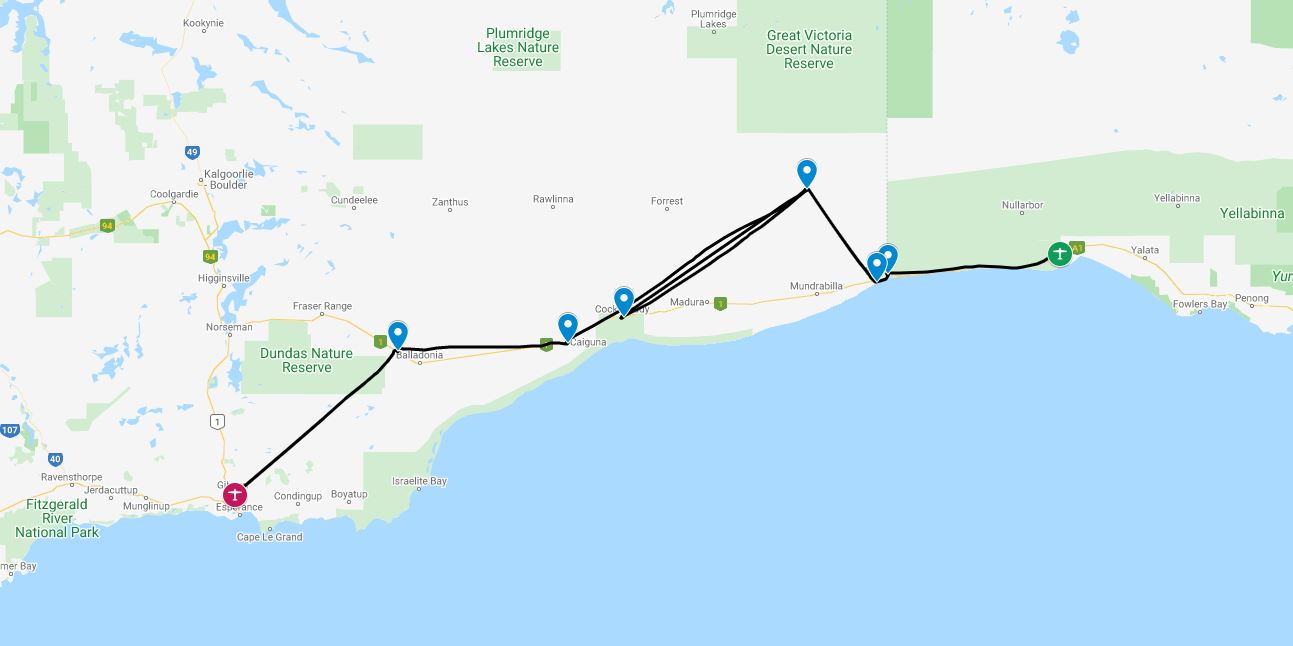
The fuelers were good enough to replace the fuel used on this round trip free-of-charge. After another cold drink, I set off back across familiar ground. This time, I decided I’d visit the Caiguna roadhouse instead! The dirt strip was typical of those I’d encountered at other roadhouses; while visiting pilots do not make up much business for these facilities the airstrips are usually kept in good condition in case the Royal Flying Doctor Service needs to land. Caiguna was an interesting stop. The main attraction at the self-styled “hub of the universe” seemed to be the gnome garden!
Now back on track, although running later than I had hoped, I set out for the next of the chain of roadhouses that made up my route for the day. This was the Balladonia Roadhouse, further down highway 1. One of their claims to fame was that pieces of the American Skylab space station had rained to earth on their grounds! Like many other places I’d stopped, services were decreased from normal due to COVID; much like some of the stations completely isolating themselves, this seemed a little excessive for the current conditions with no cases in the community. They were at least able to offer me a “toastie” and a bottle of juice for dinner.
I sat and munched while planning my next steps. I wanted to head further into Western Australia, as the Balladonia motel did not offer many charms for an overnight stay. Sunset was approaching however, so I’d need a stop with lighting, and I’d need to be able to get to accommodation. After much investigation I settled on the coastal town of Esperance. It was a weekend, and high season, but after phoning around almost every hotel and motel in town I managed to secure a room and set off from Balladonia, pausing only for a couple of the staff to take some photos; apparently this was the first time they’d seen an airplane visit the roadhouse!
As I departed there was a light rain shower nearby, which cast a rainbow out of my left window. The sun was nearing the horizon as I crossed the last vestiges of the outback towards the coast. Some convective weather was starting to build around the coast just beyond Esperance, with dramatic lightning flashes illuminating the clouds. I was able to touch down a few minutes ahead of the storm, but as I parked the heavens opened and torrential rain began to pour down. My jacket had limited effect as I fought the gusty winds to get the cover fitted, and dashed for the exit gate and my taxi.
The weather the next morning was bright and sunny, a far cry from the night before. I took the time to walk into town and breakfast in a café before strolling down to the sea shore for a little sight-seeing. The name dates back to 1792 when French explorers landed nearby, naming it and many other regional features. The town started developing in the 1860s with the settlement of farmers in the area, and growth accelerated in the 1890s when the eastern goldfields region was discovered, growing to a population of roughly 1,000 by 1900.
Agriculture grew rapidly through the 1900s, driving further development of the port. In 1979, pieces of the space station Skylab crashed onto Esperance after the craft broke up over the Indian Ocean. The municipality fined the United States $400 for littering. The fine was finally paid in April 2009, when American radio show host Scott Barley raised the funds from his morning show listeners, flew to Australia, and paid the fine on behalf of NASA.
I took a taxi back out to the airport and set off. I first hopped over to the dirt strip at Myrup, close to Esperance (closer in fact than the main airport) for a short stop before setting course to the west. I passed back over the town, enjoying beautiful views of the coastline and the “Pink Lake” which was not nearly as pink as the name would suggest.
I had planned one significant stop for the day – another “big thing”! This was located in the town of Ravensthorpe, a farming town. It was the “Big Lollipop”, constructed by a local sweet shop to pull in visitors from the passing traffic on highway 1. The main Ravensthorpe airport had been constructed for a mining development nearby, which hadn’t panned out as hoped; this did mean that the airport was quite far out of town however. There was a small dirt airstrip, maintained by a flying club, much closer in to the town. Being a small settlement there was no taxi service, so I phoned the listed airport manager and asked for his advice. When he heard that I was flying in to visit the lollipop he was quite entertained. Apparently he’d never heard of anyone else doing this, so he offered to meet me at the strip and drive me around!

I landed at the main Ravensthorpe airport on my way along, just for the fun of it, before continuing to the town. I circled a couple of times to check out the big lollipop, and also caught sight of more impressive silo art. Before landing I buzzed the airport manager’s house as he had instructed, to let him know I’d arrived. The wind was blowing fairly hard across the airstrip but landing was uneventful. I spent a while nosing around the strip before the manager arrived to drive me into town.
We stopped first at the silo art to take a few photos. The art on these silos was painted by Fremantle-based, Dutch-born artist Amok Island, and is entitled “Six Stages of Banksia baxteri” (this is a species of shrub that is endemic to Western Australia). “Each silo side shows a different stage of the flowering cycle of this species of Banksia: from flower buds, to full bloom, to seedpods developing, drying out and opening”, he explained. The artwork encircles the three silos infinitely; the final silo marks the beginning once again of the first, making a connection with the cycle of the seasons and grain farming processes this area is known for. This species of banksia is only found between Esperance and Albany. The animals in the artwork are this species’ main pollinators; the Honey Possum and the New Holland Honey eater.
Next, it was time for the main event. The sweet shop, and the big lollipop! I was a little surprised to find that we were the only customers. The proprietor was friendly and welcoming, and seemingly pleased that her lollipop was now attracting visitors by air. Naturally I bought a little candy, including a lollipop, and we bought milkshakes and sat outside the shop chatting in the afternoon sun. My hosts were kind enough to invite me back to their place on the way to the airstrip, to see the classic cars which they were working on restoring. I was even allowed to drive one around the farm yard!
They dropped me back at the airport and we spent a little while looking around Planey before I departed. The desert had now given way to agricultural land; the southern part of Western Australia is a huge producer of grains. I performed a touch and go at the interestingly named strip of Jerramungup. This is an Aboriginal word said to mean “place of the tall yate trees”. The town was only established in the 1950s. Interestingly, 200 tonnes of Laguna Verde monzonite stone from Jerramungup was used to make the Australian War Memorial in London, opened in Hyde Park in 2003.
My final destination for the day was “The Lily”, sitting overlooking the Stirling Range in southwestern WA. The flight from Jerramungup was short and I was soon circling overhead The Lily, checking out the runways and assessing the best direction for landing. The field is easy to spot, playing host as it does to both a Dutch windmill and a Dakota DC3!
Owned by Pleun and Hennie, this piece of land has been developed by them over many years into a wonderful fly-in tourist destination. I had contacted them after being recommended the place as a stop by several people. Despite being fully booked they had been interested enough in my flight to offer me accommodation in their hangar! It turned out that they had a full bedroom on a mezzanine floor, with kitchenette and shower room.
There are several rooms available on the property including one in the DC3. Pleun and Hennie used to operate a café but now limit themselves to accommodation, for a quieter life. The entire setup, windmill and all, has been built primarily by Pleun. The main house is the Old Gnowangerup Railway Station, originally built in 1925 and relocated to The Lily in the early 2000s. Pleun and Hennie invited me to join them for dinner and we spent a long evening enjoying great food and wine with a friend of theirs, swapping stories. I went off to bed satisfied at another amazing day!
Click here to read the next part of the story.
